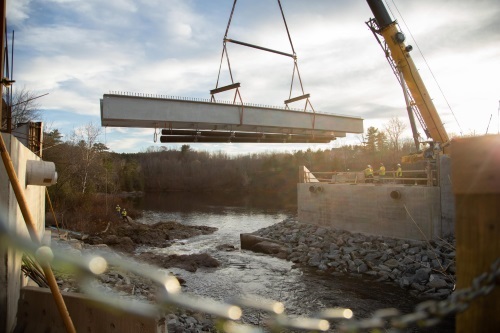The Maine Department of Transportation released the 2021 edition of its three-year work plan on January 25: a plan that includes all capital projects and programs, maintenance and operations activities, planning initiatives, and administrative functions for calendar years 2021 through 2023.
[Above photo by the Maine DOT.]
Altogether, the agency said its three-year work plan contains 2,180 individual work items with a total value of $2.71 billion – with nearly $1.4 billion for highway and bridge capital projects.
Bruce Van Note, commissioner of the Maine DOT, noted in a statement that plan “maintains essential service” despite the challenges posed by the COVID-19 pandemic, while providing for “solid” capital programs via “robust and prudent state bonding” made possible by historically low interest rates and by fully utilizing discretionary and extraordinary federal funding.

“In the short term, we must focus on defeating the virus, restoring our economy, helping Maine people and businesses in need, and addressing budget shortfalls,” he explained. “In the long term, we have great opportunities to make a real difference for the people of Maine after we resolve the chronic funding challenges in our transportation system. By investing in transportation, we can move Maine forward.”
However, the agency said that Maine’s transportation needs still “far outpace” available resources. It noted that the pre-pandemic estimate of Maine DOT’s unmet need tops $232 million per year. The agency calculated that shortfall even after assuming that state bonding of $100 million or more will continue annually.
In an op-ed in the Bangor Daily News, Van Note explained that despite this “funding uncertainty,” the Maine DOT is moving forward with its work plan because, “transportation is fundamental to our safety, economic prosperity and quality of life. It is fundamental to everything we do and who we are. No matter the size or scope, each of these projects [in the work plan] is important because it will impact our customers — the people who rely on Maine’s vast infrastructure network.”
 States
States
NCDOT Staff Participate in ‘Explosive’ Technical Training
December 19, 2025 States
States

